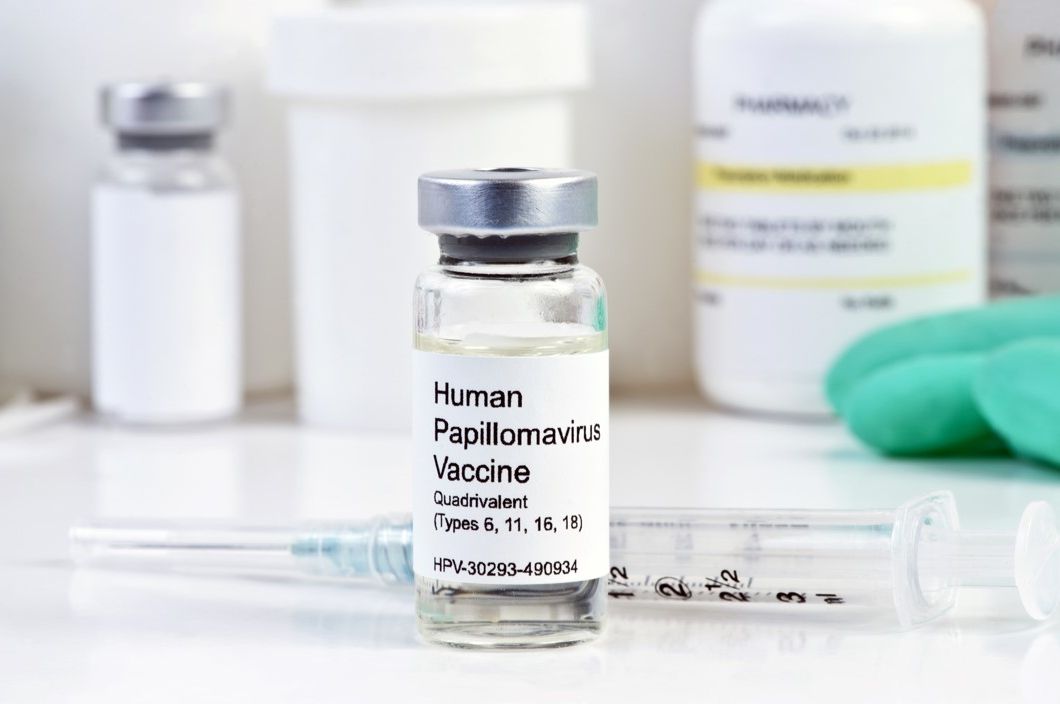- Clinical Technology
- Adult Immunization
- Hepatology
- Pediatric Immunization
- Screening
- Psychiatry
- Allergy
- Women's Health
- Cardiology
- Pediatrics
- Dermatology
- Endocrinology
- Pain Management
- Gastroenterology
- Infectious Disease
- Obesity Medicine
- Rheumatology
- Nephrology
- Neurology
- Pulmonology
Impact of HPV Vaccination in US is Rising, and Herd Immunity is Getting Stronger, According to New Research
Investigators from CDC warned, however, that HPV vaccinations missed due to the COVID-19 pandemic could stymie this progress.

The human papillomavirus (HPV) vaccination program in the US has had increasing impact on preventing infections, with evidence of strong herd protection, according to a study published in the July issue of Annals of Internal Medicine.
“Twelve years into the United States' HPV vaccination program, national data demonstrate an increasing impact among females, strong herd effects among unvaccinated females in the context of increasing HPV vaccination coverage among both males and females, and greater percentages of persons receiving the HPV vaccine in early adolescence before HPV exposure through sexual contact,” wrote study authors led by Hannah G. Rosenblum, MD, from the US Centers for Disease Control and Prevention.
HPV is the most common sexually transmitted infection in the US, with approximately 14 million individuals becoming newly infected each year. HPV vaccination was introduced in 2006, and a quadrivalent vaccine (4vHPV) was first recommended for routine vaccination of young women aged 11-12 years and for catch-up vaccination through age 26. In 2011, the vaccine recommendation was extended to men. The 4vHPV was mainly used through 2015, when a 9-valent vaccine was introduced, according to investigators.
Rosenblum and colleagues estimated vaccine impact against 4vHPV-type prevalent infection among sexually experienced women and vaccine effectiveness in sexually experienced men, all aged 14-24 years. The team used data from the National Health and Nutrition Examination Survey (NHANES) conducted in 2003 to 2006 (prevaccine era) and in 2007 to 2010, 2011 to 2014, and 2015 to 2018 (vaccine eras). Participant-collected cervicovaginal and penile specimens were tested for HPV DNA; the prevalence rates of 4vHPV and non-4vHPV types were estimated in each era for women and in 2013 to 2016 for men, according to the study.
Findings
Between 2015 and 2018, compared with the prevaccine era, 4vHPV-type prevalence decreased 85% overall among sexually experienced women aged 14-24 years, 90% among vaccinated women, and 74% among unvaccinated women. “The decline in 4vHPV-type prevalence among unvaccinated females suggests strong herd effects or indirect protection,” wrote Rosenblum et al.
The data showed that the percentage of women reporting receipt of at least 1 HPV vaccine dose was 25.2% in 2007 to 2010 and greater in the later vaccine eras, reaching 59.0% between 2015 and 2018. Also, more young women were vaccinated before they reached 15 years of age. Between 2011 and 2014, 27.2% of vaccinated women aged 14-24 years were vaccinated before age 15 years, compared with 48.6% between 2015 and 2018.
Among male participants, the percentage of those who reported receiving at least 1 HPV vaccine dose was greater between 2015 and 2018 (29.5% [95% CI, 25.0%–34.5%]) than in 2011 to 2014 (14.1% [CI, 11.7%–16.9%]), according to the study. Vaccination before age 15 years was reported in 18.6% (CI, 11.7% to 28.3%) of vaccinated males in 2011 to 2014 and 48.7% (CI, 31.3% to 66.5%) in 2015 to 2018.
Regarding vaccine efficacy and impact, estimates among vaccinated women were similar from 2007-2010 (64% and 61%, respectively) and 2011-2014 (84% and 89%, respectively), and both measures increased between these 2 vaccine eras, according to authors. However, from 2015-2018, efficacy and impact diverged (60% and 90%, respectively). Among men between 2013 and 2016, vaccine efficacy was estimated to be 51%.
“As with females, most vaccinated males in this NHANES analysis received the vaccine at older ages than recommended and were likely affected by herd effects by the time collection of male HPV data began,” noted authors. “We do not have data from the prevaccine era on male HPV prevalence and cannot provide population impact estimates for males.”
In an accompanying editorial, Rebecca Perkins, MD, MSc, from Boston University School of Medicine and Boston Medical Center, and colleagues stated that despite these encouraging findings, during the COVID-19 pandemic, “providers and health systems have deprioritized adolescent vaccination, and particularly HPV vaccination, which in turn has led to more severe drops for HPV vaccination than for other adolescent vaccinations, and for adolescent vaccination compared with early childhood and adult vaccinations.”
“Even as adolescents return for well visits and routine vaccinations, the need to compensate for the cumulative deficit of missed vaccinations over the past 2 years has created a serious and urgent threat to cancer prevention efforts, with a shortfall from which it may take a decade to recover,” continued Perkins et al.
To combat the decreased rates of HPV vaccinated during the pandemic, the editorial’s authors highlighted several strategies clinicians can use to help boost immunization rates, including a strong provider recommendation; standing orders allowing nurses and licensed medical assistants to give vaccinations that are due without the need of a clinician interaction; and reminder and recall programs that use population management systems to remind patients about vaccination deadlines and recall them for appointments.
“Using evidence-based methods and redoubling our efforts to prioritize HPV vaccination will be crucial to ensuring that we do not lose a generation to preventable HPV-associated cancer,” they wrote.
